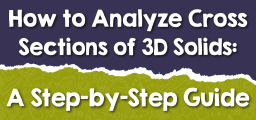How to Understand the Key Properties of Trapezoids
Among the many geometric figures, the trapezoid stands out with its unique set of properties. With one pair of parallel sides and another non-parallel, the trapezoid forms a bridge between parallelograms and more general quadrilaterals. This guide is here to decode the special properties of this intriguing shape.

Step-by-step Guide: Properties of Trapezoids
Defining a Trapezoid:
A trapezoid (or trapezium in some regions) is a quadrilateral with exactly one pair of parallel sides. The parallel sides are called bases, while the non-parallel sides are the legs.
Base Angles:
- Isosceles Trapezoid: A trapezoid in which the non-parallel sides (legs) are congruent. In this type of trapezoid, base angles are congruent.
- Non-Isosceles Trapezoid: Base angles are not necessarily congruent.
Midsegment (Median) of a Trapezoid:
The segment that joins the midpoints of the legs of a trapezoid is called the midsegment. This segment is parallel to the bases and its length is the average of the lengths of the bases.
Parallel Sides and Angles:
In any trapezoid, the interior angles on the same side of the legs sum to \(180^\circ\).
Height and Area:
The height (or altitude) of a trapezoid is the perpendicular distance between its parallel sides (bases).
The area, \(A\), of a trapezoid is given by:
\( A = \frac{1}{2} (b_1 + b_2) \times h\)
where \(b_1\) and \(b_2\) are the lengths of the bases and \(h\) is the height.
Examples
Example 1: Midsegment of a Trapezoid
In trapezoid \( ABCD \) with \( AD \) parallel to \( BC \), if \( AD \) measures \( 6 \) units and \( BC \) measures \( 10 \) units, determine the length of the midsegment.
Solution:
To start, remember the definition of the midsegment in a trapezoid: It connects the midpoints of the two non-parallel sides (legs) and its length is the average of the two bases.
Using the given measurements, we can apply the formula:
\( \text{Midsegment} = \frac{\text{Base 1} + \text{Base 2}}{2} = \frac{AD + BC}{2} = \frac{6 + 10 }{2} = \frac{16 }{2} = 8 \)
The midsegment of trapezoid \(ABCD\) is \(8\) units in length.
Example 2: Area of a Trapezoid
Determine the area of trapezoid \( PQRS \), where \( PQ \) is parallel to \( SR \), \( PQ \) measures \( 5 \) units, \( SR \) measures \( 9 \) units, and the height of the trapezoid is \( 4 \) units.
Solution:
To determine the area of a trapezoid, we utilize the formula:
\( A = \frac{1}{2} (b_1 + b_2) \times h \)
Where \( A \) is the area, \( b_1 \) and \( b_2 \) are the lengths of the bases, and \( h \) is the height.
Plugging in our given values:
\( A = \frac{1}{2} (PQ + SR) \times \text{height} = \frac{1}{2} (5 + 9) \times 4 = \frac{1}{2} \times 14 \times 4 = 28 \)
The area of trapezoid PQRS is \( 28 \) square units.
Example 3: Isosceles Trapezoid Angles
In an isosceles trapezoid, if one of the base angles measures \(60^\circ\), what is the measure of the angle adjacent to it?
Solution:
An isosceles trapezoid has congruent legs, and its base angles (angles adjacent to the same base) are congruent.
If one base angle is given as \(60^\circ\), then the adjacent base angle, which is congruent to it, will also be \(60^\circ\).
In an isosceles trapezoid, if one base angle measures \(60^\circ\), the adjacent base angle also measures \(60^\circ\).
Practice Questions:
- If one pair of opposite sides in a quadrilateral are parallel and the other pair is non-parallel, what type of quadrilateral is it?
- In a trapezoid, if the non-parallel sides are of equal length, what special name is given to this trapezoid?
- True or False: The diagonals of an isosceles trapezoid are always equal in length.
- In a trapezoid \(ABCD\) where \(AB\) is parallel to \(CD\), if angle \(A\) measures \(75^\circ\), what would be the measure of angle \(C\) given that the angles on the same side of the non-parallel line are supplementary?

Answer:
- Trapezoid.
- Isosceles trapezoid.
- True.
- \(105^\circ\) (since \(180^\circ – 75^\circ = 105^\circ\)).
Related to This Article
More math articles
- Expert Advice on Making Math Fun
- Number Properties Puzzle -Critical Thinking 6
- FREE 8th Grade OST Math Practice Test
- Bеѕt Cаlсulаtоr fоr ACT Aspire Mаth Tеѕt
- The Ultimate SHSAT Math Formula Cheat Sheet
- The Ultimate 7th Grade KAP Math Course (+FREE Worksheets)
- How to Find the Area and Circumference of Circles? (+FREE Worksheet!)
- Full-Length 6th Grade GMAS Math Practice Test-Answers and Explanations
- FREE 6th Grade PARCC Math Practice Test
- Unlocking Solutions: A Step-by-Step Guide to How to Solve Non-linear Equations by Substitution

























What people say about "How to Understand the Key Properties of Trapezoids - Effortless Math: We Help Students Learn to LOVE Mathematics"?
No one replied yet.